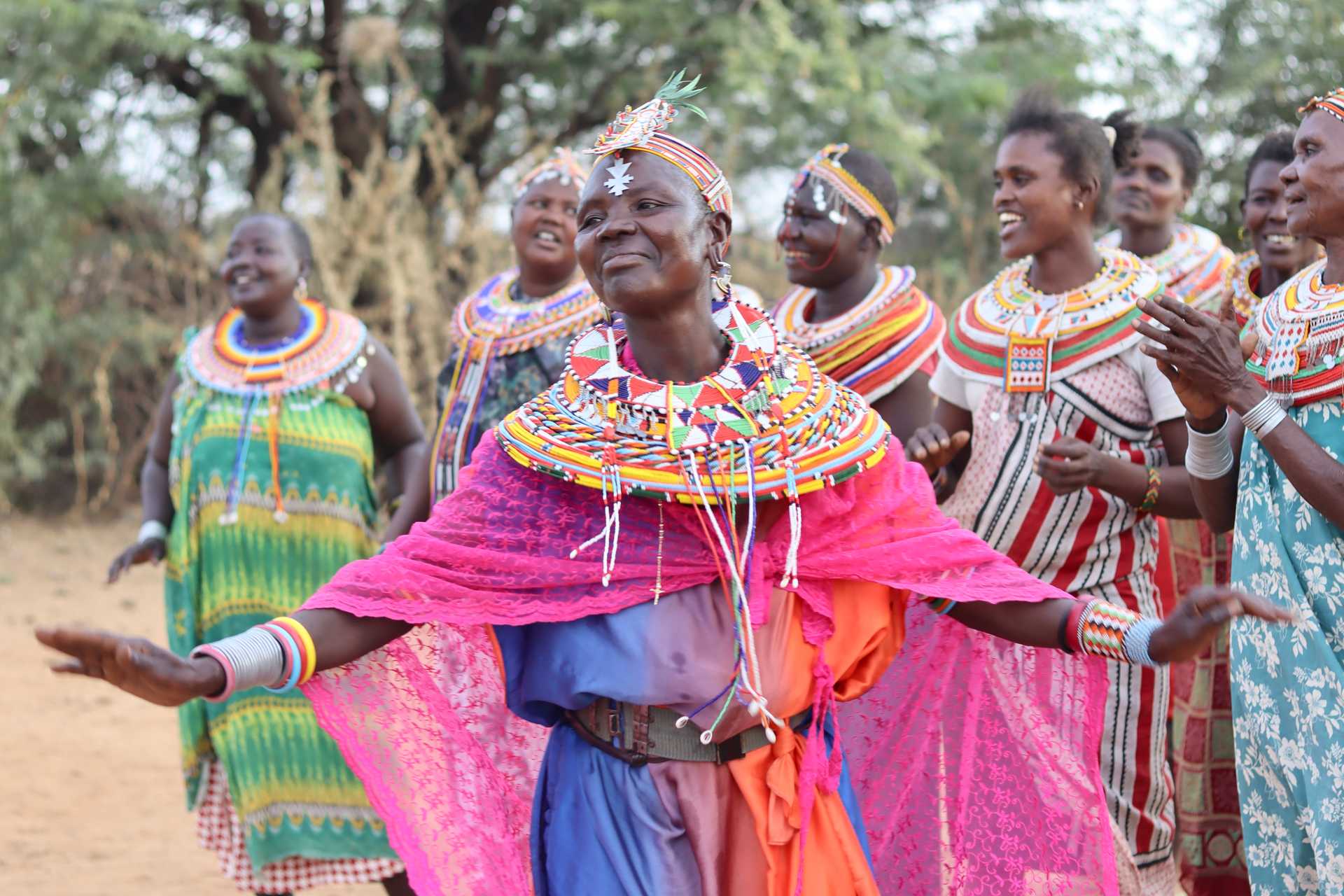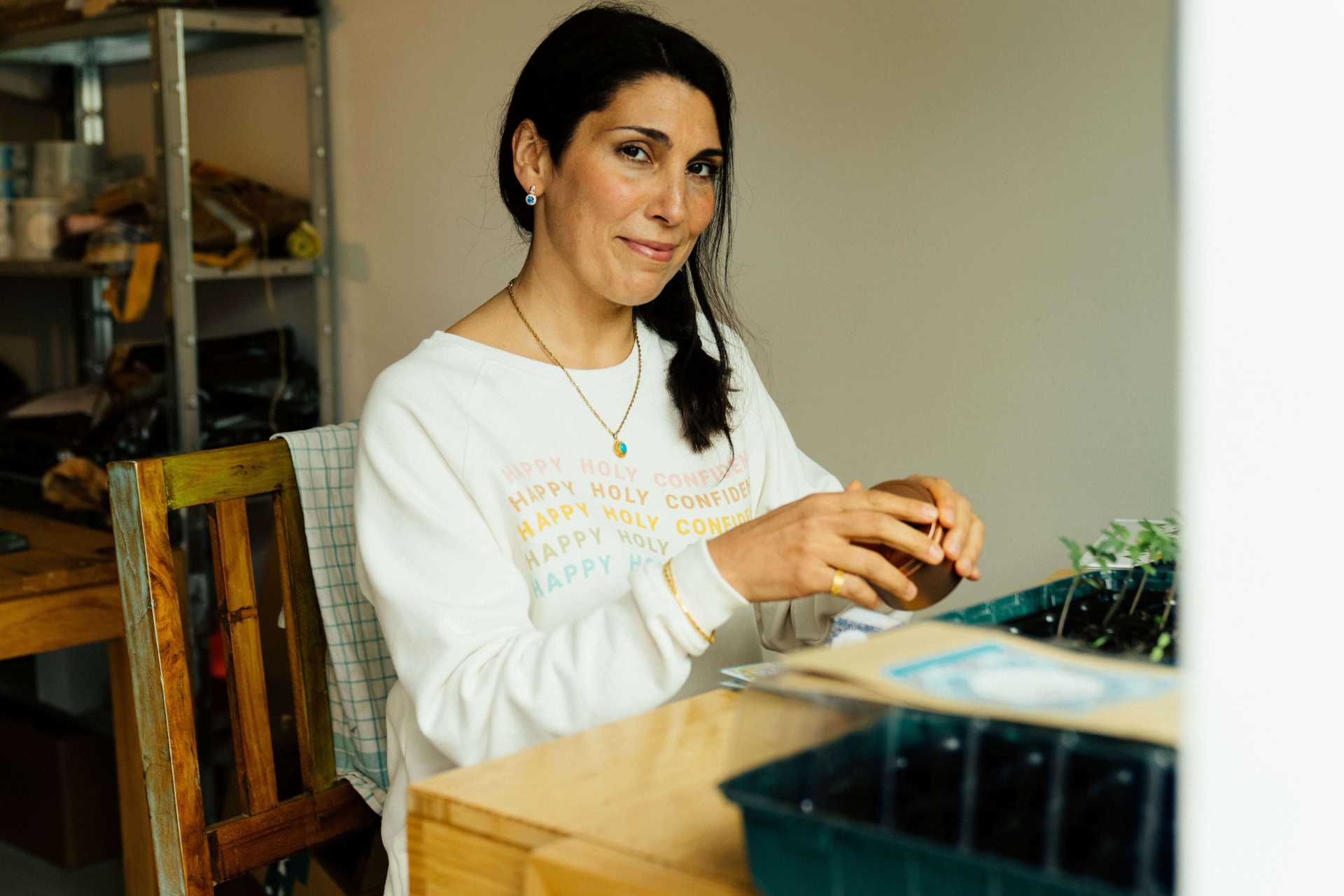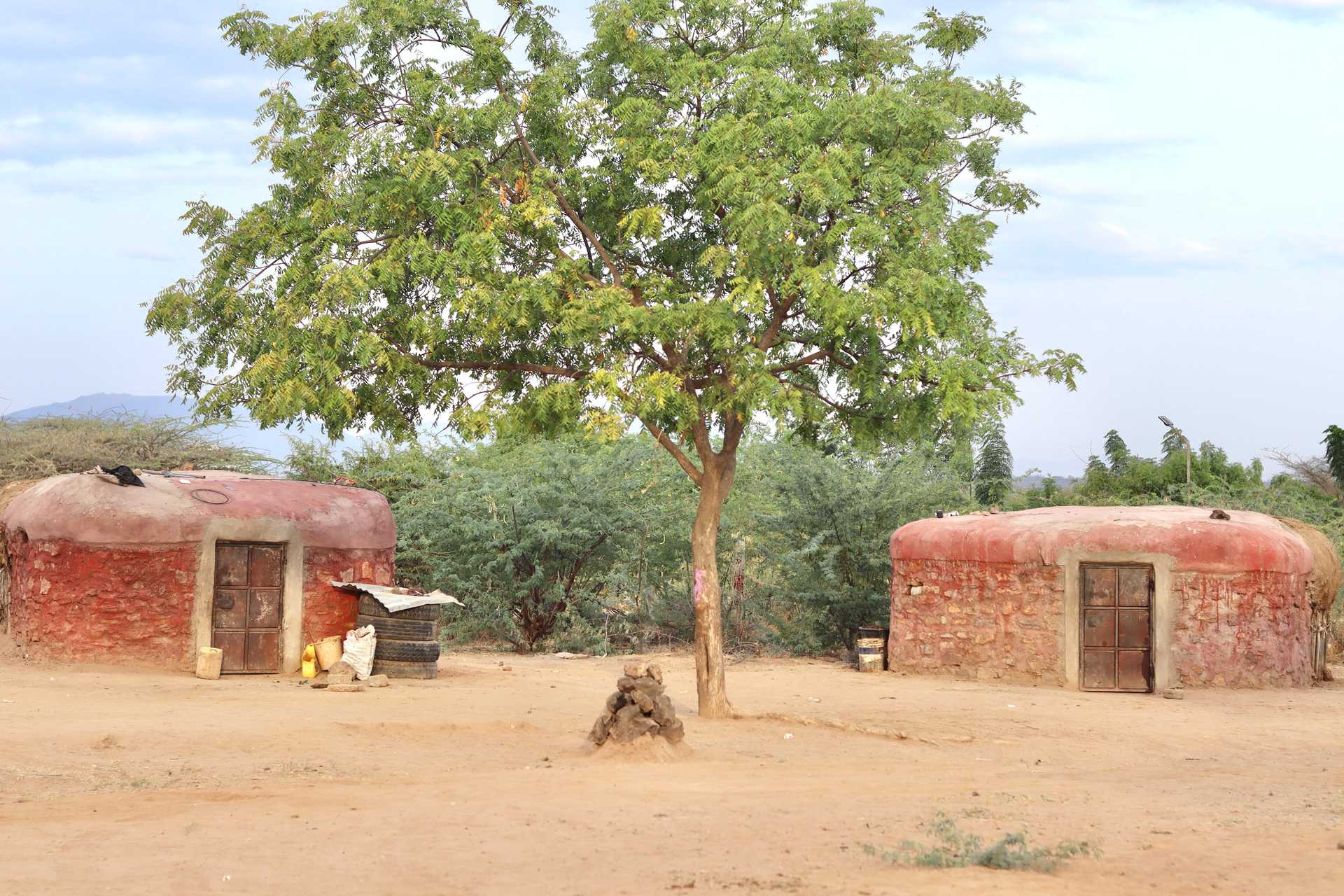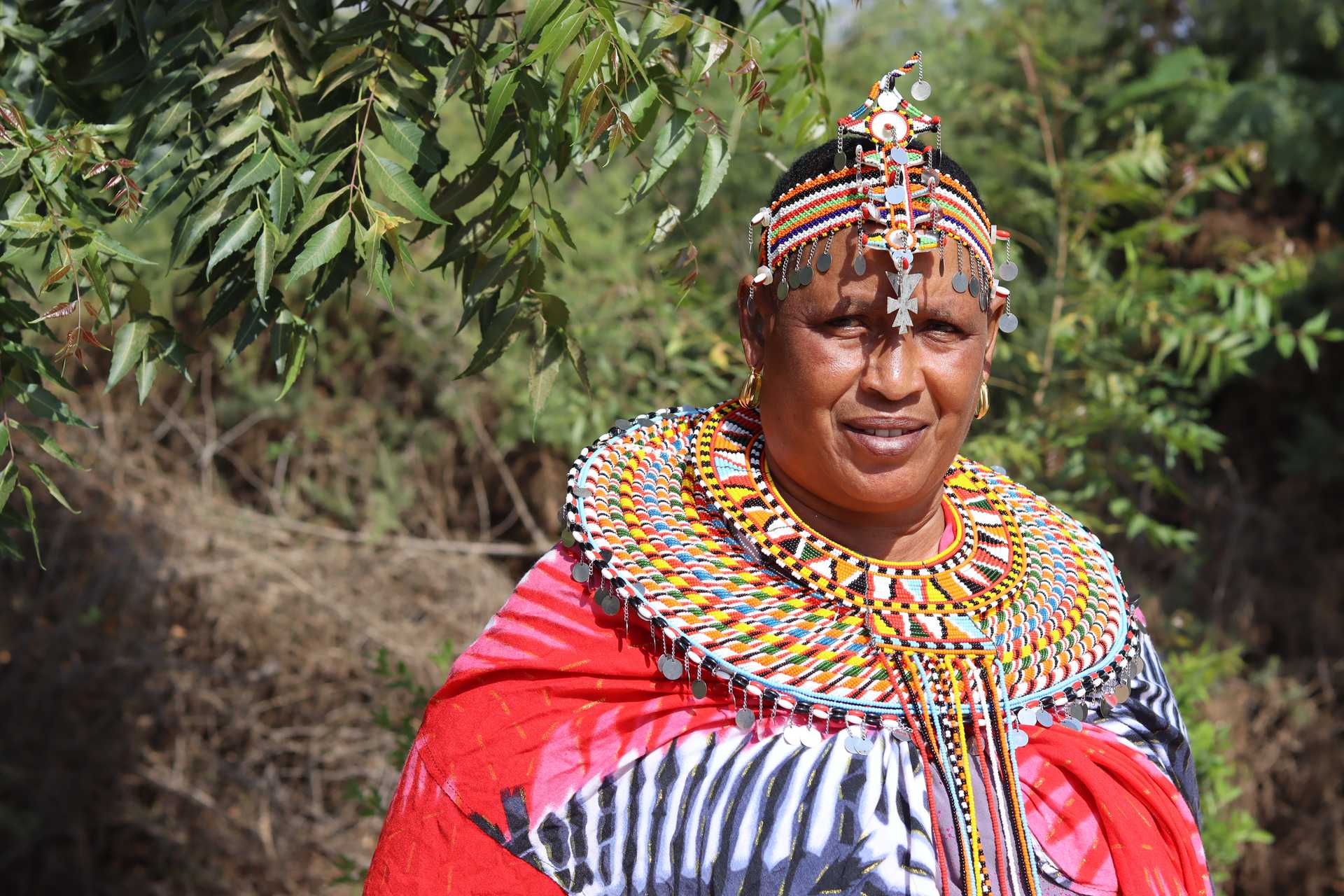On the Ewaso Nyiro River, which flows past the women’s village, I meet Rebecca Lolosoli. She is an indigenous Samburu and the founder of Umoja. I don’t know how queens feel, but I think I now have an idea of what it might be like to sit next to one.
Founder Rebecca Lolosoli
Rebecca Lolosoli’s charisma and wisdom overshadow her fatigue. She is constantly on the move - speaking at conferences, connecting women, raising awareness about structures of violence, and collecting donations. Her work sustains a village of more than 40 women who have fled violence and over 100 children.
The story of Africa’s first and only women’s village, Umoja (Swahili for “unity”), began in the early 1990s. To feed her six children and herself, Rebecca opened a small grocery store in Archer’s Post. It became a place of exchange, where women affected by violence confided in her. She heard about their worries for their young children, their lack of shelter and livelihoods, and the arbitrary beatings by their husbands. Survivors of rape by British soldiers spoke of pregnancies and being ostracized by their families.
Colonial Continuities
British military stations are a stark reminder of colonial continuity, closely tied to the emergence of the women’s village. For years, people in the region have tried to draw attention to the toxic waste left behind by the military and the fatal accidents caused by weapons testing. Added to this are cases of sexual violence. It seems the more beautiful and fertile the land, the more brutal its history of appropriation and humiliation.
Red clay soil allows crops such as bananas, mangoes, sweet potatoes, and corn to thrive. My travel companion, Bethi Ngari, tells me that the U.S. corporation Del Monte controls the pineapple plantations. Locals harvest the fruits of their land for meager pay. Those who aren’t fast enough are punished: Guard dogs are set on workers, or they are beaten by staff. The yellow fruit is preserved, enriched with industrial sugar, and sold in lifeless tins to international supermarket chains.
The situation is similar on coffee plantations: foreign corporations sell aromatic Kenyan beans at high prices abroad, while most Kenyans drink instant coffee from Nestlé. Exploitation has consequences.
Many women in the region struggle with health issues, emaciated, and weakened by malaria and other diseases, and their children are malnourished. Rebecca helps the women not only with free food but also by covering hospital costs. Her husband and his family try to force her to stop. Conflicts are constant.
Women who attempt to earn a living by selling home-brewed schnapps are sent to prison, unable to take their children with them. Rebecca realizes there must be a way out of this spiral of violence. At first, she and other women tried in vain to draw attention to the intolerable situation at the municipal district office.
The Creation of Umoja
The women began making jewelry from plant seeds and dried fruit, selling it to tourists. Time and again, their ex-husbands snatched away the profits.
The idea of building a women’s village emerged. Fifteen courageous women joined forces. Many feared the consequences of taking such an emancipated path. A plot of land was available near the road where the women continued to sell their jewelry. From there, they could walk back to the village together, protecting each other. Their new home was close to the Ewaso Nyiro River, where they could wash themselves and their jewelry. The women built the first houses with their own hands. Men began to lie in wait for them and beat them, but their response was clear: “We are staying here. We are not leaving. You can kill us, but we will not leave.”
International Attention
A women’s organization from Nairobi noticed Umoja. Rebecca traveled to the capital for a conference, later to South Africa, and in 2005 even to New York. At the United Nations, she heard other participants speak about their grandmothers who fought for rights they now enjoy. This inspired Rebecca to see herself as a women’s rights activist. Back in Umoja, she shared her insights and encouraged her friends to recognize their own strength. They fought for the village without any rights and built the houses with their own hands.
Everyday Life in the Women’s Village
I am standing in Umoja, with children playing around me. Christine, who has lived here for six years, tells me about daily life: there is a school up to Year 9, supported by a European foundation, and a nursery with a playground. Boys are allowed to stay until they finish school; after that, they can visit the village as guests.
The medicinal neem tree grows in Umoja. The women use its leaves to make tea to treat malaria and prepare a brew for skin diseases. Spinach, cabbage, pumpkin, tomatoes, bananas, and medicinal herbs thrive in the garden. Goats provide milk, meat, and leather for beds. Many women share a house until it is clear they will stay. Selling jewelry and offering tourist tours provide additional income, which they collectively decide how to use.
A Self-Determined Life in Solidarity
The women speak out against injustices, provide menstrual products, teach their children, and prevent genital mutilation—procedures that are often fatal or make childbirth dangerous. They have resolved to fight against child marriage, femicide, and for their daughters to remain in school. Like Rebecca, the residents of Umoja are proud that one day their granddaughters will say: “It was our grandmothers who fought for our rights.”



